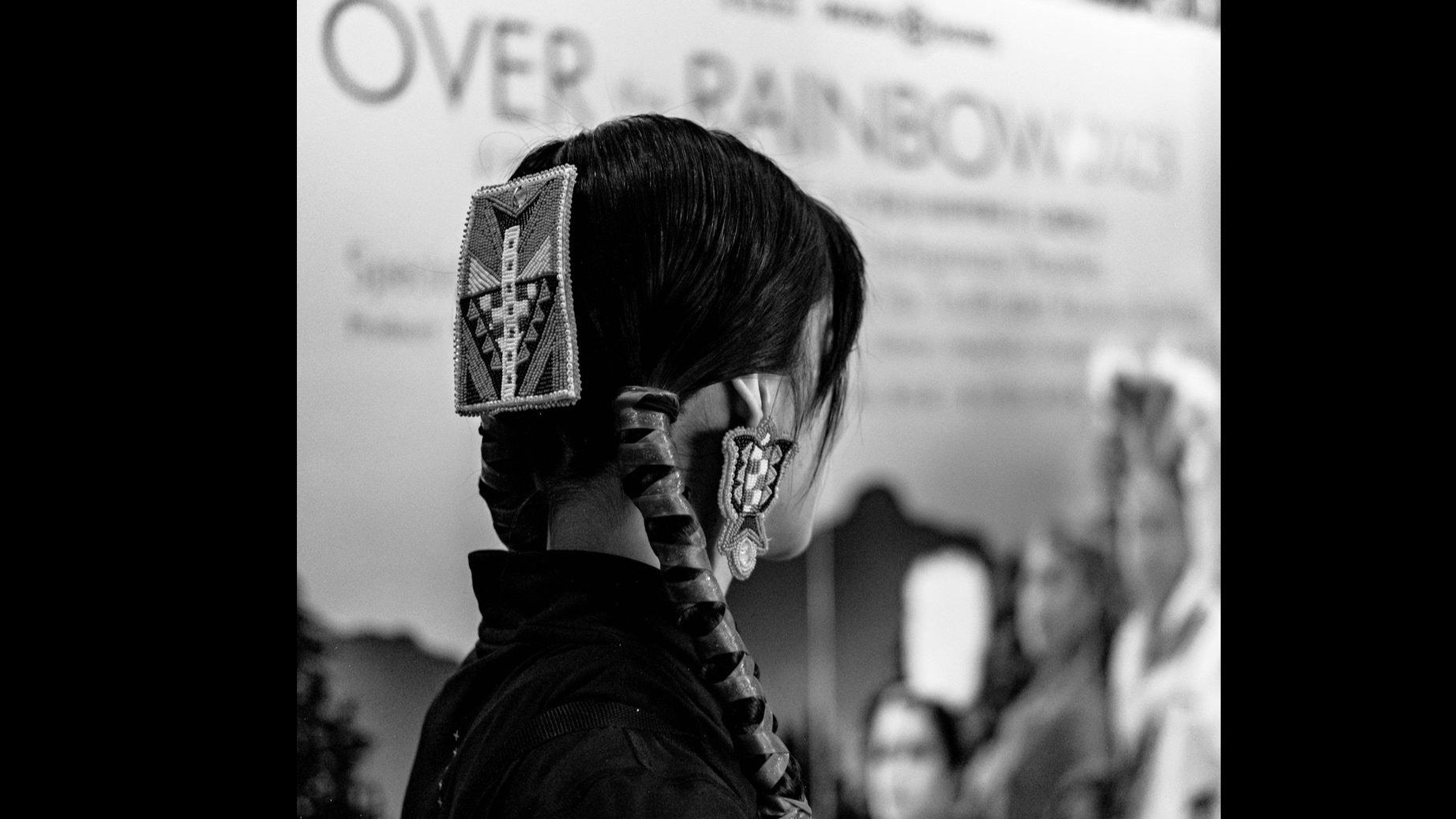Today is the first solar term of winter in China, the Beginning of Winter. In Vancouver today, fine rain falls like notes on a pan flute, playing a melodious and spiritual tune. The winter rain washes away, and fallen leaves spread out, making the land softer. As we enter early winter, the tenderness for the indigenous people hidden in our hearts is awakened by this winter rain.
The fate of indigenous people, which seemed to have passed the Ice Age in history, is still strikingly similar to the cyclical nature of history. Look at Palestine and Israel today; the conflict of human civilization has never ceased from ancient times to the present. The clash of civilizations leads to the extinction of not only the population of weaker nations but also their religious beliefs and languages. For weaker nations, the only thing that can be preserved is their art.
For example, Indian music and indigenous beadwork.
These arts are like the wild winds on the eve of the Beginning of Winter, with branches swaying in the storm, leaving only a few remaining leaves trembling. Heaven and earth are indifferent; this is the fate of a sorrowful nation, and it is also the natural law that nature follows.
The sun hides behind the rain curtain, and the wheels of thought accelerate. The deeper I think, the colder my back feels. The winter of 2023 in North America officially begins as I continuously reflect on the phrase "the weak are left with only art."
As winter time begins, the sun retreats southward at the rate of the Earth's revolution around the sun. In Vancouver, the rain drizzles, while in South America, the Andes are basking in sunshine. I seem to see the scene of the Indian tribes returning to life described by my favorite contemporary female writer San Mao: in the dawn, the sun slowly rises, and the indigenous people stand quietly in the golden morning sun, awakening together with the earth, praising the energy of the sun.
In indigenous culture, the sun is a sacred and majestic presence, the father of the earth, and the source of life. Their worship of the sun resonates like a series of melodious pan flutes, echoing through the millennia.
Indians believe that the sun is the guardian of life; they see it as a navigator, guiding them in the right direction. On the vast land, they discern the changing seasons through the sun's position and the intensity of its light, grasping the laws of nature. The sun is their mentor, teaching them how to live in harmony with nature and how to respect the gifts of the earth.
San Mao, a traveler who has traversed mountains and rivers, uses her lively writing to tell many stories of Indians' worship of the sun in her book "Traversing Mountains and Rivers." On September 30 of this year, Canada’s National Day for Truth and Reconciliation, I visited an indigenous craft workshop with several female friends to learn the art of bead flower weaving.
Indigenous women weave unique ethnic crafts with beads, including beautiful headdresses, necklaces, bracelets, and various pendants. I was deeply attracted to a sun god wind chime. It is woven from countless orange bead flowers, and each pendant shines with a warm and soft luster, hanging in the corner of the room, gently swaying and producing a clear sound like silver bells, as if telling me the aesthetic of indigenous art.
Under the golden sunlight, I walked around the exhibition case to the window. The sunlight filtered through the colored glass, casting colorful shadows, illuminating every pendant engraved with indigenous totems, such as the golden eagle, soaring in the sky, witnessing the vicissitudes of time; and the narwhal, a symbol of the Inuit, the guardian of the ocean. There are bead flowers with Métis symbols, blooming on the earth, connecting the long history and legends of the Bering Strait and the American continent.
A narrow Bering Strait both separates and connects the two continents. The Earth revolves around the sun, and the direction of the Earth is not about the Eastern or Western Hemisphere; this is merely a narrow relative positioning by humans. The totem beliefs and spatial cognition of indigenous people bear a striking resemblance to the philosophy of harmony between heaven and man in our Huaxia civilization.
There is no conclusive evidence that the earliest indigenous people of the Americas came from the Shang Dynasty through the Bering Strait. However, interestingly, indigenous musical instruments, such as the pan flute, are remarkably similar to ancient Chinese instruments like the sheng; they both have long bodies and blowing holes, producing sounds that express deep emotions. The Indian flute is similar to the Chinese xiao and di, while the Indian bison horn resembles Chinese instruments like the hulusi. These instruments are like living fossils, indirectly indicating a mysterious blood connection between Indian civilization and Eastern Huaxia civilization.
The weak are ultimately left with art.
The weak may lose much, but they will ultimately retain the most resilient art. For indigenous people, even if they are now on the margins, they can still find a way to voice themselves through art. Music has a powerful expressive ability; it can transcend the limitations of language and social status, allowing the weak to express their voices in unique ways, delivering profound emotional impacts. For example, LEO ROJAS weeps for the stories of the Indians through his music, awakening my deep reflection on shared values and cultural diversity.
Let the fate of the weak no longer be trapped in the harsh winter due to war and slaughter; let the weak leave not just their art on this planet. This should be the conclusion drawn from human reflection.
